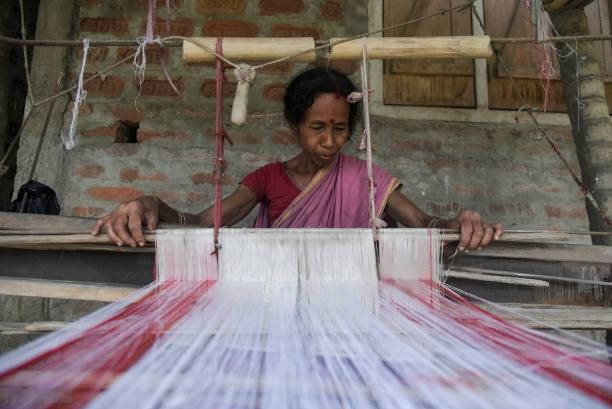India’s handloom sector stands as a cherished symbol of the country’s rich cultural heritage and plays a crucial role in providing livelihoods to people in rural and semi-rural regions. With over 70% of all weavers and allied workers being women, the handloom industry also directly contributes to women’s empowerment. Rooted in nature, the handloom sector embraces eco-friendly production processes, requiring minimal capital and power. Moreover, its adaptability to fashion trends and customer preferences has made it a dynamic and enduring part of Indian culture.
National Handloom Day: A Tribute to Tradition
The roots of India’s handloom industry date back centuries, reflecting the nation’s time-honored craftsmanship and artistic brilliance. In 1905, the Swadeshi Movement was launched, promoting indigenous industries, including handloom weavers. To honor this cherished legacy and encourage the growth of handlooms, the Government of India designated August 7 as National Handloom Day in 2015. The day serves as a reminder of the significance of handlooms and their contribution to the nation’s identity and heritage. Inaugurated by Prime Minister Narendra Modi in Chennai, the first National Handloom Day marked a momentous occasion in India’s artistic journey.
E-commerce: A Catalyst for Revival
The celebration of National Handloom Day on August 7 is more than just a commemoration; it signifies the handloom sector’s remarkable revival, largely driven by the advent of e-commerce. Traditional handlooms have always been an integral part of India’s cultural fabric, but the onset of mechanical looms posed a challenge to their prominence. However, e-commerce platforms have emerged as transformative forces, breathing new life into the handloom industry.
E-commerce Empowers Artisans
E-commerce and online marketplaces have played a crucial role in reconnecting artisans with a global audience, transcending geographical barriers. Retailers have harnessed the power of digital platforms to narrate the stories behind each handwoven piece, fostering a deeper connection between customers and the rich heritage woven into these fabrics. With the support of e-commerce, artisans are empowered to showcase their creations directly to consumers, eliminating the need for intermediaries and ensuring fair compensation for their craftsmanship. This direct link between artisans and consumers has revitalised the handloom sector and provided sustainable livelihoods to the weavers.
Preserving Traditional Artistry in Contemporary Fashion
The fusion of traditional craftsmanship with modern aesthetics has been a hallmark of the handloom revival. Online retail platforms have infused handloom products with contemporary designs, making them relevant and appealing to the younger generation. As consumers increasingly appreciate the authenticity and uniqueness of handloom products, e-commerce has emerged as a loom-to-wardrobe solution, promoting the craft to a wider audience.
Promoting Sustainability and Transparency
E-commerce platforms dedicated to promoting sustainability have offered crucial support to handloom artisans and their communities. These platforms showcase a wide array of handmade weaves, from linen and cotton sarees to Banarasi dupattas and Chanderi dresses. By supporting brands engaged with artisanal communities across the country, these platforms bridge the gap between consumers and the handloom sector, preserving the traditional craft and heritage.
A Resplendent Celebration by Tata Consumer Products
Even FMCG brands like Tata Consumer Products (TCP) have stepped forward to celebrate National Handloom Day by promoting India’s handloom traditions through a special packaging campaign. With its “Desh Ke Dhaage” campaign, TCP’s limited-edition pack collection pays homage to the diverse and unique artistry of Indian handlooms. Each pack serves as a canvas, showcasing the incredible artistry of craftsmen and their timeless creations. TCP will contribute a percentage of consumer spending on this collection to support the welfare of artisan communities.

Handloom Renaissance: A Journey of Resurgence
As India celebrates National Handloom Day, the handloom sector stands tall as a testament to the nation’s artistic prowess and cultural identity. E-commerce and digital platforms have been instrumental in the revival of handlooms, connecting artisans with a global audience, providing sustainable livelihoods, and preserving traditional artistry. With transparency, sustainability, and inclusivity at the core of this resurgence, the handloom industry embraces a bright future, woven with threads of tradition and innovation. As consumers and brands join hands to celebrate this timeless craft, the handloom sector takes center stage in India’s journey of artistic rejuvenation and socio-economic empowerment.
– Published in businessworld.
11 Famous Art Forms of India that You Should Definitely Check Out

Contributor






